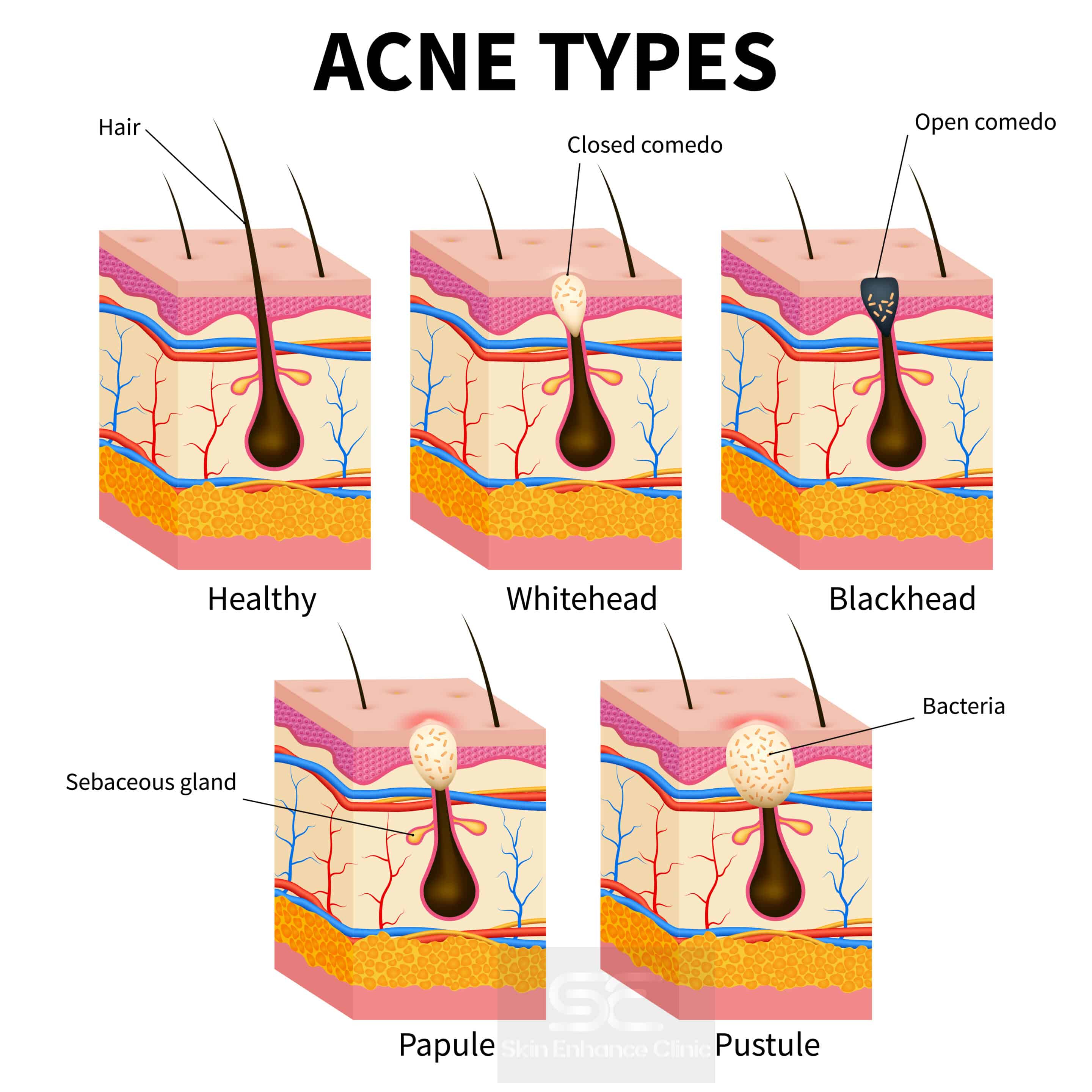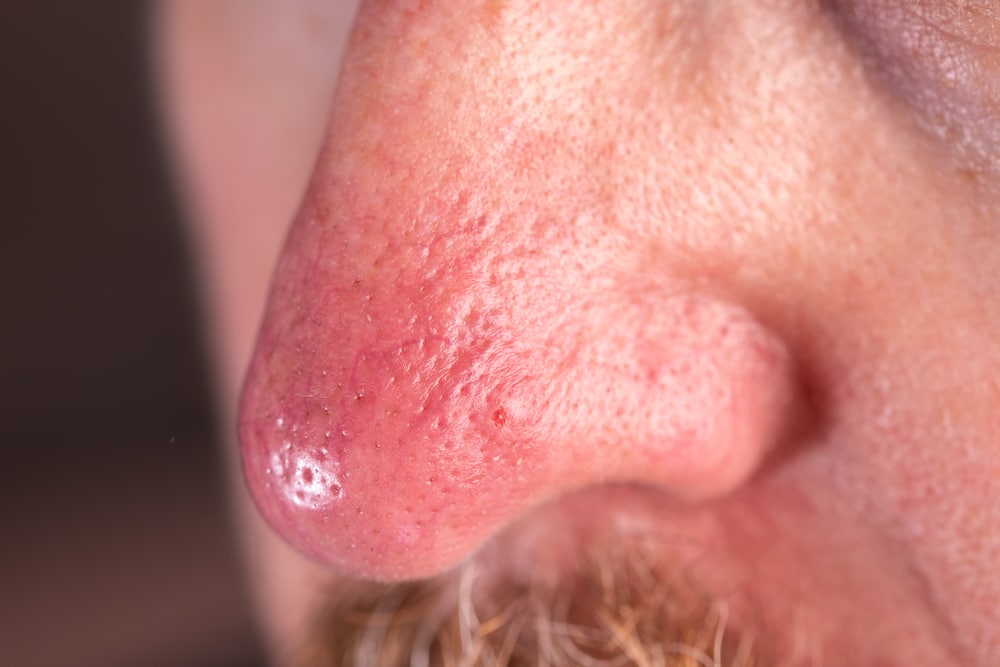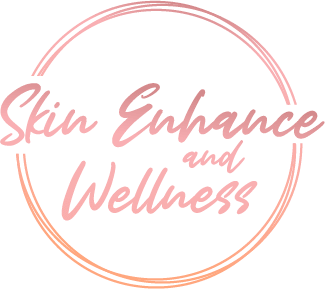There are indeed many similarities between these two conditions. Firstly, they are very common. Secondly, they are chronic inflammatory skin conditions. Thirdly, they must be managed with daily home skincare. Most importantly, they affect your psychological wellbeing and confidence. Unfortunately, there is no cure for either of them.
That’s where the similarities end. The spots present in these two conditions are entirely different. Let’s look at each of them in detail.
The spots of Acne
In summary, acne sufferers may have a combination of whiteheads, blackheads, papules pustules, and nodules. Acne can affect your face and/or body.

The spots of Rosacea
Predominantly affecting those between the ages of 30 to 55, it only affects your face with cheeks, chin, nose, and forehead involvement. There are four types of rosacea with increasing severity. Initially, there is intermittent flushing of the cheeks. You may experience burning when washing your face with skincare or even just water. This may progress to persistent redness with or without enlarged or visible blood vessels. This is called vascular or erythematotelangiectatic rosacea.
The next stage is inflammatory or papulopustular rosacea. Here there is persistent redness with papules or red spots in the central area of the face. The spots may be pus-filled or solid, red swollen bumps.
The third type of rosacea is phymatous rosacea. In addition to the above, there is a thickening of the skin or sebaceous glands, particularly on the nose, chin, and forehead.
The most severe type of rosacea is ocular rosacea. As the name suggests, the eyes and eyelids are involved. You may experience a burning or stinging sensation in your eyes. Your eyes may be red and sensitive to light. You may also get some swelling around the eyes.
As rosacea progresses from mild to severe, it is vital to diagnose and manage it early.


How to tell the difference between acne and rosacea spots?
Here are some tips to help differentiate between the spots of acne and of rosacea. Firstly, as a doctor, especially in general practice, we gain a wealth of information from the history from the patient. The pimples of rosacea are not the first sign but rather a progression after flushing, sensitivity, and redness. In contrast, in acne, you may develop whiteheads or blackheads without any warning signs.
Secondly, the redness in acne is just around the pimples while redness in rosacea is more widespread. Thirdly, the location of the spots gives us a clue. Acne may be present anywhere, but rosacea only affects the central part of the face. Moreover, you do not get blackheads in rosacea.
Is this relevant for treatment?
As previously said, there is no cure for these conditions. In rosacea, if you can identify the triggers you can try to avoid them if possible. Both conditions require anti-inflammatory and antibacterial agents for management. However, because rosacea skin is often very sensitive, you can’t use acne treatments for rosacea.
As June is acne awareness month, let’s make the correct diagnosis so that you can minimise embarrassment and use the correct treatment.
Related Blogs:
Could the sensitivity on your face be Rosacea?


Recent Comments